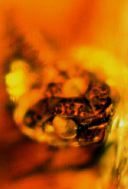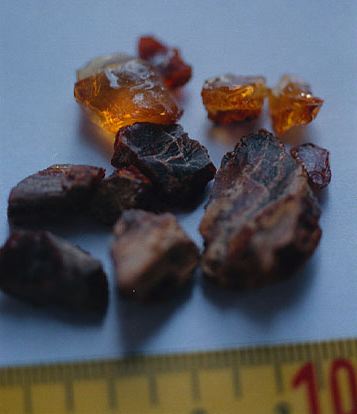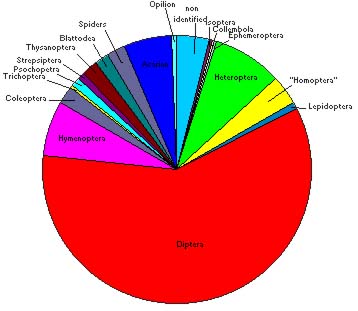
|
|
|
Amber fossils from Lebanon |
|
|
Amber is a warm tactile material, shimmering, imprisoning life as "magic inclusions", having the colour of sun, of gold, inspiring ancient worship, easily worked, burning with a pleasant smell and attracting light bodies when it is scraped ... what more can we ask? |
|
 [Images from the collection of Dany Azaar] |
|
|
Amber is a fossilised tree resin that has hardened and been preserved in the earth's crust for millions of years. It is produced by a variety of ancient trees, mostly conifers. Often regarded as a gem, amber is actually an organic substance whose structure has changed very little over time. Under the proper conditions the resin undergoes certain physical and chemical changes that turn it into amber. If the resin has hardened in recent times, it is called copal. Presently certain trees produce large quantities of resin; the Kauri gum from New Zealand (Agathis australis), Sundarac from Australia (Tetraclinis articulata), the Gum Arabic tree from Africa (Acacia arabica) and the Algarroba tree from South America (Hymenaea courbaril). It was trees like these which produced the resin that turned to amber. Amber preserves all kinds of organisms, from microbes, plants, insects and spiders to small vertebrates, that made contact with the sticky substance because over millions of years, the molecules of resin gradually amalgamated into long, durable chains, creating a material remarkably like plastic : airtight, watertight, chemically inert. Unlike ordinary fossils, which are relatively crude rock moulds of prehistoric life forms, amber fossils are preserved with minute details of their morphology and it has even been suggested that viable DNA may persist in some amber-trapped organisms. Amber's colour is usually yellow, but shows every graduation from white to dark red and even black. |
|
 Samples of Lebanes amber. |
|
|
Hundreds of amber deposits occur around the world with different ages such as Mexican(20-25 My.), Dominican amber (25-30 My.), Baltic amber (35-40 My.), Chinese amber (40-50 My.), Canadian amber (70-80 My.) and Siberian amber (80-115 My.). Lebanese amber, well known as the oldest amber (120-135 My.) with insect inclusions, is found in various outcrops in Lebanon. More than forty six Lebanese localities are known having amber in their geological layers : Jezzine, Daher El Baidhar, Bireh, Kfar Niss, Hammana, etc. |
|
|
|
|
|
Lebanese amber goes up to the lower of Cretaceous (120-135 My.), crucial period in coevolution between flower plants and insects. This period witnessed the radiation of Angiosperms (a very important period of the origin of the flowering plants that now dominate the earth), an event accompanied with a speedy diversification of insects and massive extinctions of ancient groups. The exceptional conservation state of organisms included in lebanese amber gives information about paleoenvironnements and allows reconstruction of the ancient "Dinosaurs' age" ecosystem with amazing intricacy of the north-east part of the Gondwanian continent. Everything in this reconstruction derives from direct evidence provided by the amber fossils or is inferred on the basis of palynology. Lebanese amber inclusions are of great interest for phylogenetic studies of actual insects with a perspective of studying the history of entmological biodiversity of the lower Cretacious period ; the extinction processes and the diversifications in this class. - Dany Azaar, September 1997 Dany AZAR Born in Sin El Fil / Lebanon in 19 August 1973 Studies:
Actual situation:
Publications:
|
|
|
Created by the Digital Documentation Center at AUB in collaboration with Al Mashriq of Høgskolen i Østfold, Norway. 971001/bl - Email: ddc-info@aub.edu.lb |
|
